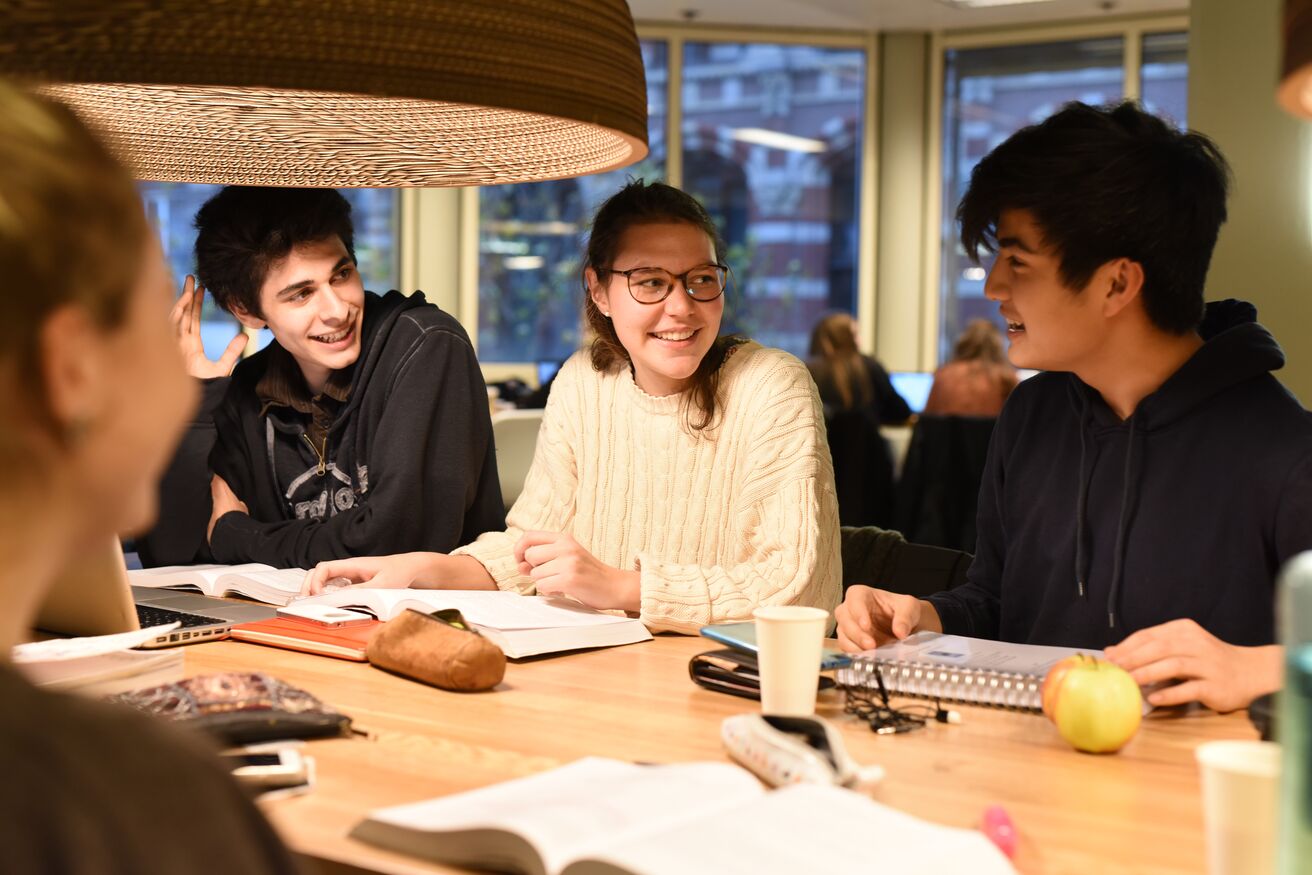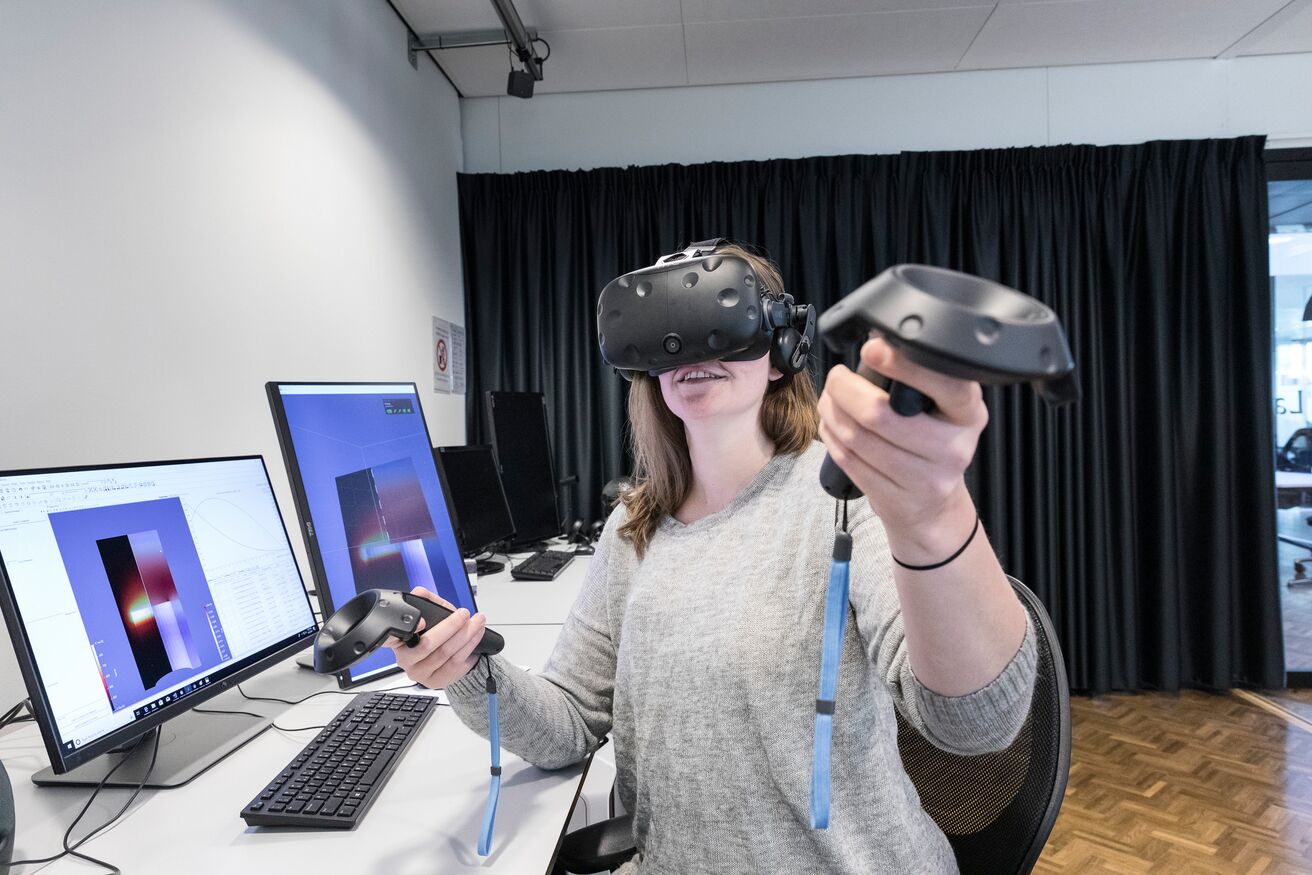
Starting with peer and/or self-assessment
At the UvA, many group assignments are given to students: among other things, they teach them to work together, an important skill for their careers. However, cooperation between students is not always without its problems: difficult communication and unequal commitment can cause a lot of frustration. Is it fair that every student, regardless of his/her contribution, receives the same grade? And how can students be assessed separately for their cooperation? Peer and self-assessment can be a solution for this: a way of testing in which students are asked to assess their own and/or others’ efforts. Are you curious how to integrate this form of assessment into your teaching? Read the article for more information and practical advice.
Step 1. What and who should the students assess?
To start with peer and/or self-assessment, the teacher must first decide what the students can assess. What is the learning objective of the group assignment? There are two possibilities.
- Assessing the final result (and possibly the individual contribution of the student therein).
- You can choose to include a presentation in this assessment (oral defense of the final result).
- Assessing the group process (and possibly the individual role of the student in it).
- You can focus on process or task aspects. Process aspects concern the attitude of the student (openness to feedback, communicating, etc.) Task aspects concern parts of the assignment (searching literature, writing, etc.)
It is important to determine who/what the students are assessing: the group as a whole, an individual in the group, or a combination of both?
Step 2. How do you want to monitor the group process?
Once you have answered the questions above, you can determine how the monitoring of these student groups will take place. This is essential in order to be able to substantiate any differences in grades. As a teacher, you are in a better position to give feedback on the group process than the students themselves: you have experience and are, in principle, outside the process, which enables you to have an objective view and adjust the process, if necessary. Below, you will find several possibilities:
- Have the group keep a log/notes of the meetings
- Join group meetings (in the background), live or via Zoom: This provides a lot of reliable information, but is very labour-intensive.
- Have a discussion with the group or individual group members afterwards.
- Ask individual students to substantiate their completed rubric in text.
- Ask individual students to write a short summary of their contribution.
Step 3. Which method do you want to use for the peer and/or self-assessment?
In order to assess group work on an individual basis, in addition to monitoring the group process, there are various methods of peer and/or self-assessment. Students assess themselves and/or the other group members with regard to their contribution to (aspects of) the group process: their interpretation of certain tasks the group had to carry out or their contribution to the final result. You can choose to assess students anonymously (fellow students and teacher will not know who has given which assessment). Below are four different methods you can use. You are free to combine these methods, but because of the workload we recommend you to limit yourself to one method.
Method Goldfinch – process, processaspects including self-assessment
In the Goldfinch method, each student scores himself and the other group members against each other on a number of process aspects. You can determine these process aspects yourself. The scores are added up and an average is taken from them. In principle, the students receive the group result as the final mark. The students who deviate significantly from the average receive a grade that is adjusted upwards or downwards. You can even consider giving students a fail mark (see student C in the example).
| Write the names of the group members beside yourself and give each one a point | You | Student A | Student B | Student C |
| Enthousiasme/participation | 2 | 2 | 2 | 0 |
| Coming up with ideas | 3 | 3 | 2 | 1 |
| Understanding what is required | 2 | 3 | 2 | 2 |
| Contribution to team functioning | 2 | 3 | 2 | -1 |
| Organising the group | 1 | 3 | 1 | 0 |
| Perform tasks efficiently | 2 | 2 | 2 | 0 |
| TOTAL | 12 | 16 | 11 | 2 |
3 = better than most other team members
2 = about the same as the other group members
1 = not as good as others
0 = no useful contribution
-1 = disruptive to the group
The average = number of aspects times the score 2; in the example 6 x 2 = 12. For each group member who gets an average of 12 the final grade = group result. Result can be adjusted up or down by the teacher.
Methode Conway – process, task aspects, no self-assessment
This method proceeds in a similar way to Goldfinch, but the assessment asks about the students’ performance with regard to various task aspects. Also, no self-assessment takes place within this method.
| Write the names of the group members opposite and give each one a point | Student A | Student B | Student C | Student D |
| Literature search | 3 | 1 | 5 | 3 |
| Analyzing literature | 3 | 1 | 5 | 3 |
| Report writing | 3 | 2 | 3 | 3 |
| Group presentation | 3 | 2 | 4 | 3 |
| TOTAL | 12 | 6 | 17 | 12 |
1 = no useful contribution
2 = good try, without success
3 = average
4 = above average
5 = very good
Method Habeshaw – final result including self-assessment, not anonymous
This method is based on a number of points that each student can divide between themselves and the other group members. The allocation of the points is done by the members of the group in mutual consultation (so not anonymously). If there are few or no differences in the individual contributions to the group result, the points will be distributed equally. In case of deviations (see example), differentiation may occur. For example: each group member may divide the group grade x the number of group members. In the table this is the number 6 (for ease 60) x 3 = 180 points that each group member may distribute. A restriction may be that no cell may have scores lower than a 5.5 or higher than a 10.
| Allocation of points to each other | Student A | Student B | Student C |
| Student A gives | 80 | 40 | 60 |
| Student B gives | 60 | 60 | 60 |
| Student C gives | 70 | 50 | 60 |
| Total points | 210 : 3 = 70 | 150 : 3 = 50 | 180 : 3 = 60 |
Methode Eversmann – final result including self-assessment, anonymous
In this method, the contribution to the group result is expressed as a percentage for each student. Moreover, each group member does this anonymously. Based on deviations from the average percentage (= 100% divided by the number of students), the teacher may decide to differentiate the final grade.
| Perception of contribution to final result in % | Student A | Student B | Student C | |
| Student ? gives | 15% | 60% | 25% | 100% |
| Student ? gives | 30% | 40% | 30% | 100% |
| Student ? gives | 25% | 50% | 25% | 100% |
| Total | 70 : 3 = 23,3 | 150 : 3 = 50 | 80 : 3 = 26,6 |
Important:
- In this process, the student should not only be assessed (graded), but should also gain insight into his own functioning in the group and into how other group members assess it. Therefore, you can think about the following questions:
- How do you prevent friends from becoming enemies?
- Pay attention to the importance of honest criticism.
- Train in giving feedback already during the group process.
- Always communicate the use of peer and/or self-assessment in the study guide: what will this assessment focus on (process/end) and who should assess the students? Also be transparent about the method you use, as well as the assessment instrument you use.
- Bear in mind that peer and/or self-assessment does not automatically mean that you as a teacher spend less time assessing; it does give you more grip on the group process and/or the individual contribution of the students.








